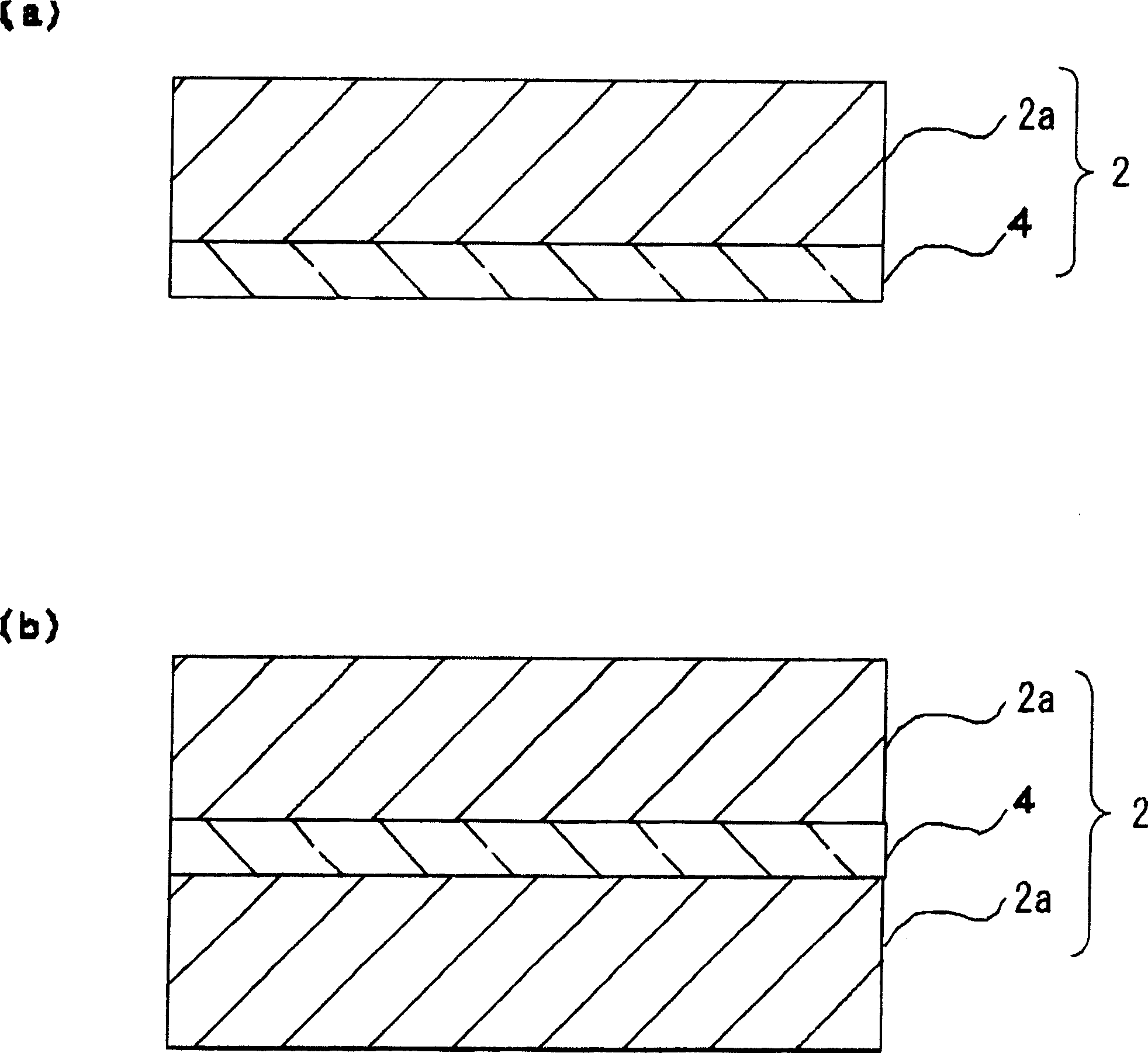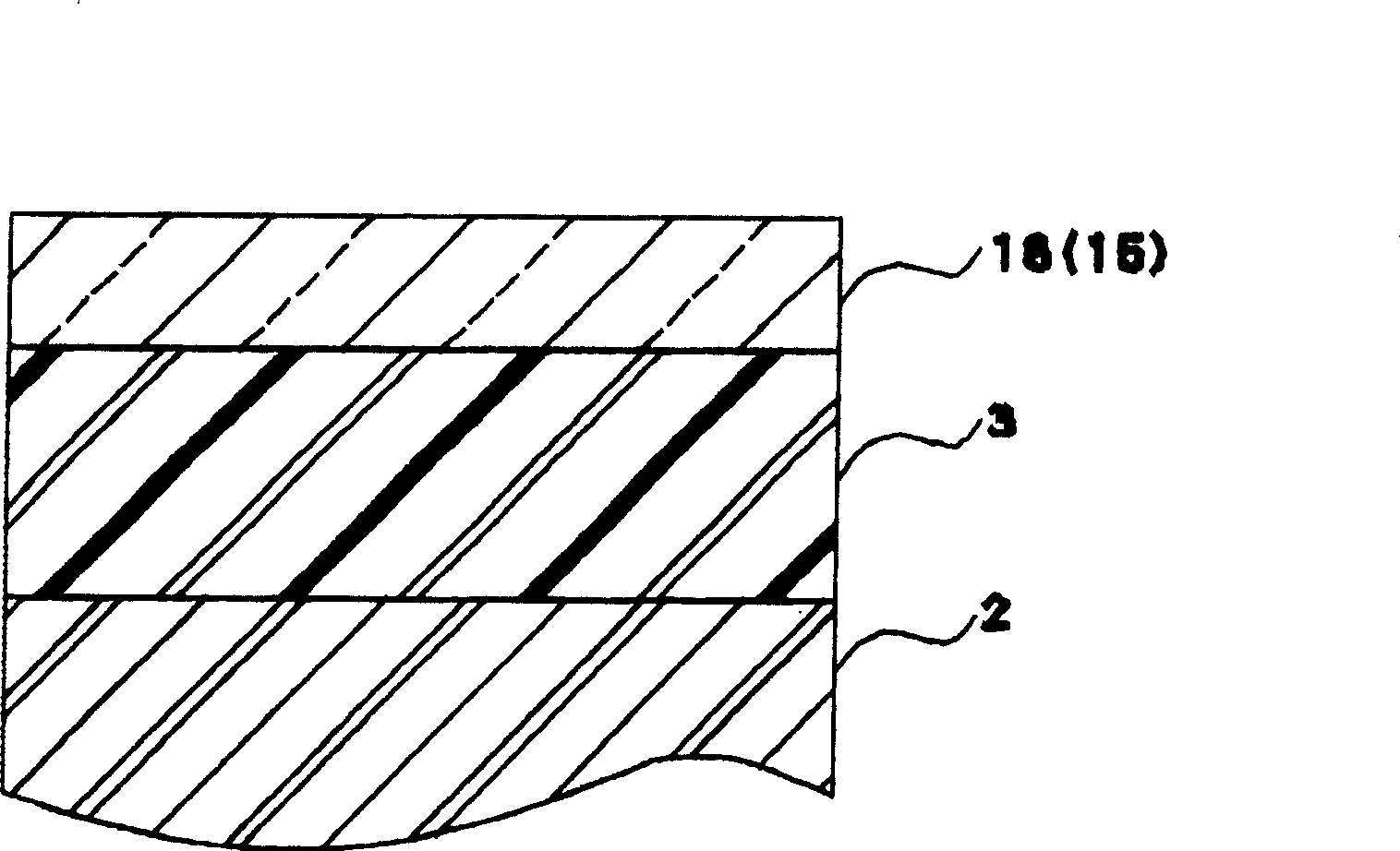Method for producing optical component and manufacturing device thereof
A technology of optical components and manufacturing methods, applied in optics, polarizing components, nonlinear optics, etc., can solve the problems of difficult to produce flicker, reduced contrast, uneven color of display screen, etc.
- Summary
- Abstract
- Description
- Claims
- Application Information
AI Technical Summary
Problems solved by technology
Method used
Image
Examples
Embodiment 1
[0303] Example 1
[0304] [Manufacture of Vertical Alignment Film]
[0305] The solution of the vertical alignment film (manufactured by JSR Corporation, JALS-2021-R2) was diluted twice with γ-butyrolactone to prepare a film composition solution.
[0306] This film composition liquid was applied on a glass substrate as a base material to produce a coating film, and the glass substrate on which the coating film was formed was fired at 180° C. for 1 hour to obtain a base material for forming a vertical alignment film.
[0307] [Production of coating film for birefringence layer formation]
[0308] The solution of the vertical alignment film (manufactured by JSR Corporation, JALS-2021-R2) was diluted 8 times with diethylene glycol dimethyl ether to prepare a solution, and the solution was used as a polyimide-containing solution.
[0309] 20 parts by weight of a compound represented by the above chemical formula (Chemical 11) (where the value of X is 6) as polymerizable liquid c...
Embodiment 2
[0343] An optical element was obtained in the same manner as in Example 1, except that the surface layer was removed by spin coating.
[0344] Spin coating is performed as described below.
[0345] 0.015ml / cm is added dropwise on the surface of the cross-linked liquid crystal layer 2 The base material of γ-butyrolactone was rotated at a rotational speed of 2000 rpm for 10 sec, whereby γ-butyrolactone was uniformly diffused on the surface of the cross-linked liquid crystal layer. Further, it was dried in this state for 5 min.
[0346]For the optical element obtained by spin coating, the film thickness of the crosslinked liquid crystal layer laminated on the surface of the substrate was measured. The film thickness was about 1.35 μm. In addition, the film thickness after removing the surface layer was measured with the stylus type level difference meter used in Example 1.
[0347] About the obtained optical element, it carried out similarly to Example 1, and measured retardat...
Embodiment 3
[0350] An optical element was obtained in the same manner as in Example 1, except that the surface layer was removed by polishing.
[0351] The removal of the surface layer was performed using a chemical mechanical polishing apparatus ("LGP-612" manufactured by ラツプマスタ—SFT Corporation) as a polishing apparatus. As the abrasive, PLANERLITE-4000 (manufactured by Fujimi Corporation) was used, and the polishing pad used IC1400 (manufactured by Rodel Corporation).
[0352] By this polishing method, the part from the surface layer to the depth of 1300 angstroms in the base material on which the crosslinked liquid crystal layer was laminated was removed, and the optical element in which the birefringence layer was formed was obtained.
[0353] About the obtained optical element, it carried out similarly to Example 1, and measured retardation, light leakage, and haze.
[0354] In this optical element, the retardation in the thickness direction of the birefringent layer was about 0 nm,...
PUM
| Property | Measurement | Unit |
|---|---|---|
| haze | aaaaa | aaaaa |
| thickness | aaaaa | aaaaa |
| haze | aaaaa | aaaaa |
Abstract
Description
Claims
Application Information
 Login to View More
Login to View More - R&D
- Intellectual Property
- Life Sciences
- Materials
- Tech Scout
- Unparalleled Data Quality
- Higher Quality Content
- 60% Fewer Hallucinations
Browse by: Latest US Patents, China's latest patents, Technical Efficacy Thesaurus, Application Domain, Technology Topic, Popular Technical Reports.
© 2025 PatSnap. All rights reserved.Legal|Privacy policy|Modern Slavery Act Transparency Statement|Sitemap|About US| Contact US: help@patsnap.com



